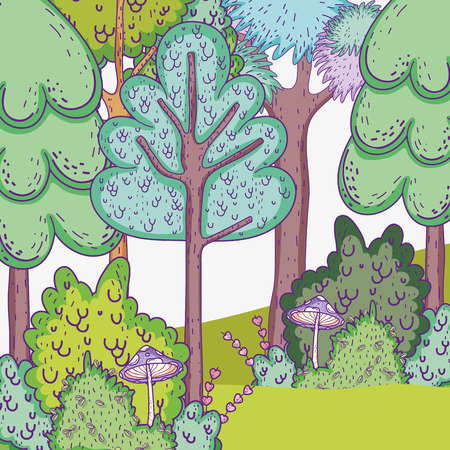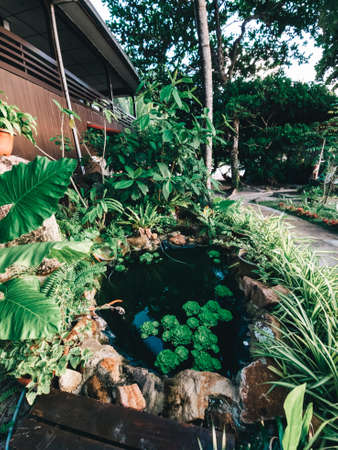Understanding Your Regional Climate and Native Plant Zones
Before diving into designing a drought-tolerant native garden, it’s important to understand the specific climate conditions in your region. Knowing your local environment helps you choose plants that are naturally adapted to thrive with less water, resist local pests, and support native wildlife.
Find Your USDA Hardiness Zone
The USDA Plant Hardiness Zone Map is a useful tool for gardeners across the United States. It divides the country into zones based on average annual minimum winter temperatures. Each zone represents a 10°F range and helps determine which plants are most likely to survive year-round in your area.
To find your zone, visit the official USDA website or check with your local extension office. Heres a quick guide to what each zone generally means:
| USDA Zone | Average Minimum Temperature (°F) | Typical Regions |
|---|---|---|
| 3-4 | -40 to -20 | Northern Midwest, Mountain States |
| 5-6 | -20 to 0 | Northeast, Upper Midwest |
| 7-8 | 0 to 20 | Southeast, Mid-Atlantic, Pacific Northwest |
| 9-10 | 20 to 40 | Southern California, Gulf Coast, South Florida |
| 11+ | Above 40 | Hawaii, parts of Southern Florida |
Understand Your Local Climate Challenges
Drought conditions can vary widely depending on where you live. Some areas face long dry summers, while others may have occasional droughts during certain seasons. Understanding your local rainfall patterns, soil type, sun exposure, and wind conditions will help you make smarter choices when selecting plants for your garden.
Key Questions to Ask About Your Region:
- How much rainfall does my area receive annually?
- When does my region typically experience dry spells?
- Is my soil sandy, clay-heavy, or loamy?
- Does my yard get full sun, partial shade, or mostly shade?
- Are there strong winds that could affect plant health?
Selecting Drought-Tolerant Native Plants Based on Region
Once youve identified your hardiness zone and understood your local climate challenges, you can begin researching native plants that naturally thrive in those conditions. Native plants are already adapted to local weather patterns and often require far less water than non-native species.
This foundational knowledge sets the stage for creating a beautiful and sustainable garden that can handle periods of drought without sacrificing visual appeal or ecological value.
2. Choosing Drought-Tolerant Native Plants
One of the most important steps in designing a drought-tolerant native garden is selecting plants that are naturally adapted to your local climate and soil conditions. These plants not only require less water, but they also thrive with minimal maintenance and provide essential support for local pollinators and wildlife.
Why Choose Native Plants?
Native plants have evolved over time to survive in the specific conditions of your region. Theyre more resilient during dry spells and can often resist pests and diseases better than non-native species. Plus, they play a crucial role in maintaining the ecological balance by offering food and shelter to birds, bees, butterflies, and other beneficial creatures.
How to Find the Right Native Plants for Your Region
The United States is home to diverse climates—from arid deserts to humid coasts—so its important to choose plants that match your local environment. Here are some resources to help you get started:
- Contact your local cooperative extension office or native plant society.
- Visit nearby botanical gardens or nature preserves for inspiration.
- Use online plant databases like the Lady Bird Johnson Wildflower Center’s Native Plant Finder or Audubon’s Native Plants Database.
Examples of Drought-Tolerant Native Plants by Region
| Region | Native Plant Examples |
|---|---|
| Southwest (e.g., Arizona, New Mexico) | Desert Marigold, Red Yucca, Apache Plume |
| West Coast (e.g., California) | California Poppy, Toyon, Manzanita |
| Southeast (e.g., Florida, Georgia) | Black-Eyed Susan, Coreopsis, Beautyberry |
| Northeast (e.g., New York, Massachusetts) | New England Aster, Joe-Pye Weed, Wild Bergamot |
| Midwest (e.g., Illinois, Ohio) | Purple Coneflower, Prairie Dropseed, Butterfly Weed |
Selecting Plants That Support Pollinators and Wildlife
A well-planned native garden doesn’t just conserve water—it also becomes a thriving habitat. Choose a mix of flowering plants that bloom at different times throughout the year so pollinators like bees and butterflies always have access to nectar. Include shrubs and grasses that offer shelter and nesting areas for birds and small animals.
Tips for Creating a Balanced Plant Palette:
- Select a mix of perennials, grasses, shrubs, and groundcovers.
- Group plants with similar water needs together.
- Aim for at least three different species blooming each season.
- Add host plants for caterpillars to encourage butterfly life cycles.
By carefully choosing drought-tolerant native plants suited to your region, youre not only saving water—you’re also building a beautiful and sustainable garden that nurtures your local ecosystem.

3. Design Principles for a Low-Water Landscape
Creating a drought-tolerant native garden doesnt mean sacrificing beauty or function. With a few smart design strategies, you can have a landscape thats both water-wise and visually appealing. Here are some key principles to guide your design process.
Group Plants by Water Needs
This technique, also known as hydrozoning, helps you manage irrigation more efficiently. By placing plants with similar water requirements together, you avoid overwatering or underwatering any one area of your garden.
| Hydrozone Type | Plant Examples | Watering Frequency |
|---|---|---|
| Low-Water Zone | California poppy, sagebrush, yucca | Once every 2-4 weeks |
| Moderate-Water Zone | Coffeeberry, manzanita, buckwheat | Once a week (established) |
| High-Water Zone (optional) | Ferns, redwood sorrel (shady areas) | 2–3 times per week |
Create Hydrozones Based on Sun and Soil Conditions
Observe how sunlight moves across your yard throughout the day and take note of shaded vs. sunny spots. Pair this information with your soil type—clay, sandy, or loamy—to determine where each hydrozone should go. For example, drought-tolerant plants like deer grass or ceanothus thrive in full sun with well-draining soil.
Mimic Local Ecosystems
Native plants evolved to grow in your region’s natural conditions. Use this to your advantage by designing in a way that reflects local habitats such as chaparral, oak woodland, or desert scrub. This creates a more cohesive and ecologically functional garden.
Tips for Naturalistic Layouts:
- Layering: Place taller shrubs in the back, mid-sized plants in the middle, and low-growing groundcovers near pathways or borders.
- Clusters: Group similar species in clusters of three to five for a more organic look.
- Curved Pathways: Avoid straight lines; instead use meandering paths to reflect the irregularity of nature.
Add Mulch and Permeable Surfaces
A layer of mulch helps retain soil moisture and suppress weeds. Organic mulches like bark chips or shredded leaves work well in most native gardens. Also consider permeable surfaces like gravel or decomposed granite for walkways—they allow rainwater to soak into the ground rather than running off.
Mulch Benefits at a Glance:
| Benefit | Description |
|---|---|
| Water Retention | Keeps soil moist longer between watering cycles. |
| Weed Control | Suffocates weed seeds and reduces competition for resources. |
| Soil Health | Adds nutrients as it breaks down naturally over time. |
By following these design principles, youre setting up your garden not just for survival during dry spells—but for long-term success with minimal maintenance and maximum environmental benefit.
4. Soil Preparation and Water Retention Techniques
Creating a drought-tolerant native garden starts with healthy soil that can hold onto moisture. Even if youre using native plants adapted to dry conditions, preparing your soil properly makes a big difference in how well your garden thrives. Heres how to improve your soil for better water retention using simple, sustainable methods.
Understand Your Soil Type
Before you begin, its important to know what kind of soil you have. Sandy soils drain quickly but don’t hold water well, while clay soils retain water but may not drain fast enough. Loamy soil is ideal—it holds moisture while still allowing for good drainage. You can test your soil by grabbing a handful when it’s damp and squeezing it:
| Soil Type | Feel When Wet | Water Retention |
|---|---|---|
| Sandy | Gritty, falls apart easily | Poor |
| Clay | Slick, holds shape too well | High (but poor drainage) |
| Loamy | Smooth, forms a loose ball | Ideal |
Add Compost to Improve Soil Structure
Compost is one of the best ways to enrich your soil naturally. It improves texture, adds nutrients, and increases water retention across all soil types. Spread a 2–3 inch layer of compost over your garden beds and mix it into the top 6–8 inches of soil. This helps create a sponge-like structure that holds moisture longer after watering or rain.
Use Mulch to Lock in Moisture
Mulching is a must for drought-tolerant gardens. A thick layer of mulch helps reduce evaporation, suppress weeds, and moderate soil temperature. Use organic materials like bark chips, shredded leaves, or straw around your plants. Aim for a depth of 2–4 inches—but keep mulch a few inches away from plant stems to prevent rot.
Sustainable Water Retention Practices
You can go beyond compost and mulch with these smart techniques:
- Rain Gardens: Direct rainwater from roofs or driveways into low-lying areas planted with natives that enjoy occasional wet feet.
- Swales: Shallow trenches that slow down runoff and allow water to soak in gradually.
- Cover Crops: Planting legumes or grasses during off-seasons can boost organic matter and improve water retention.
- No-Till Gardening: Minimizing soil disturbance keeps structure intact and supports healthy microbial life for better moisture control.
Quick Tip:
If youre starting fresh, consider doing a percolation test—dig a hole about one foot deep, fill it with water, and see how long it takes to drain. If it drains too fast or too slow, amend your soil accordingly before planting.
Key Takeaway:
The right combination of compost, mulch, and smart water management practices will help your native garden thrive even in dry spells. Investing time in prepping your soil now will pay off with lower maintenance and less watering later on.
5. Maintaining Your Native Garden Through the Seasons
Once your drought-tolerant native garden is established, it doesn’t need much to thrive — but a little seasonal care goes a long way. By following a few simple maintenance steps throughout the year, you can keep your garden healthy, beautiful, and water-efficient.
Seasonal Care Tips
Each season presents unique needs for your native plants. Here’s a quick guide to help you stay on track:
| Season | Tasks |
|---|---|
| Spring | Check for new growth, lightly prune dead branches, add mulch if needed, watch for weeds after rains. |
| Summer | Deep water infrequently (if needed), weed regularly, avoid pruning during heatwaves. |
| Fall | Cut back spent flowers, plant new natives before the rains, refresh mulch to conserve moisture. |
| Winter | Minimal watering if rainfall is adequate, prune dormant shrubs and trees as needed, clean up debris. |
Pruning and Trimming
Native plants generally don’t require heavy pruning, but occasional trimming helps maintain shape and encourage healthy growth. Always use clean, sharp tools and prune during the recommended season for each plant species. For example, many California natives prefer light pruning in late fall or early winter after blooming has finished.
Weeding Wisely
Drought-tolerant gardens are less prone to weeds once established, but invasive species can still sneak in—especially after rain. Hand-pulling weeds regularly keeps them from competing with your native plants for water and nutrients. Mulching also helps suppress weed growth naturally.
Conserving Water Year-Round
Your garden may be drought-tolerant, but it still needs some water—especially during dry spells or its first year of establishment. Use these tips to maximize efficiency:
- Water early in the morning to reduce evaporation.
- Group plants with similar water needs together (a practice known as hydrozoning).
- Add or replenish mulch annually to retain soil moisture.
- Use drip irrigation or soaker hoses for targeted watering that reaches roots directly.
A Quick Checklist for Low-Maintenance Success
- Monitor plant health with a quick walk-through each week.
- Tackle small tasks like weeding and deadheading regularly.
- Avoid fertilizers unless absolutely necessary—native plants typically thrive without them.
- Adjust watering based on weather conditions and rainfall.
A little attention through the seasons ensures your native garden stays vibrant and resilient while keeping water use to a minimum.


